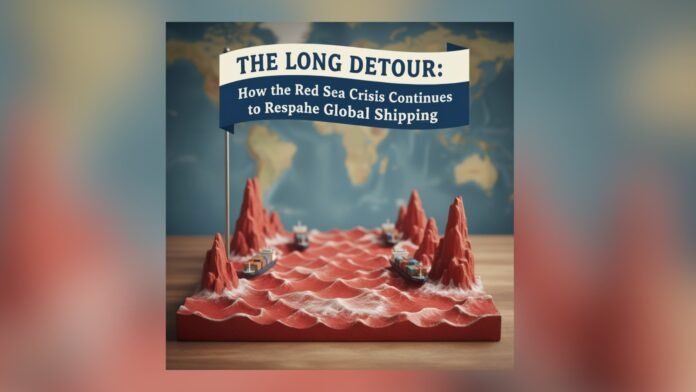Remember those headlines from late 2023 and early 2024 about ships being rerouted around Africa? Well, as we stand in October 2025, the Red Sea and Suez Canal crisis isn’t just a lingering memory; it’s a deeply entrenched reality fundamentally altering the invisible arteries of global trade. The detour has become the default.
Despite the passage of time and various international efforts, the security situation in the Red Sea and Gulf of Aden remains precarious. Just recently, in late September/early October, another commercial vessel reportedly sustained a missile strike, causing casualties. While whispers of ceasefire talks in the broader Middle East offer glimmers of hope, the Houthi threat to commercial shipping persists, reminding us that stability is still a distant shore.
The Great Diversion: Around the Cape We Go
For the vast majority of major shipping lines, the risk simply isn’t worth it. The Suez Canal, that crucial shortcut connecting East and West, is still operating at a fraction of its capacity. We’re talking about a 50-75% drop in traffic, a staggering figure that highlights the monumental shift.
Instead, the majestic super-carriers laden with everything from electronics to furniture are still adding 10-20 extra days to their voyages, sailing the long, arduous route around the Cape of Good Hope. What was once a temporary workaround has solidified into a new operational standard for the Asia-Europe trade lane. Giants like Maersk and Hapag-Lloyd are explicitly building their future network strategies, including new alliances like the “Gemini Cooperation,” around this longer route. They’ve made it clear: safety for their crews and cargo dictates the path, and until genuine, sustained security is assured, the Cape remains the preferred passage.
More Than Just Longer Trips: The Ripple Effects
The implications of this prolonged rerouting are multi-faceted:
Extended Transit Times & Strain: Goods take longer to reach their destinations, impacting lead times for manufacturers and increasing inventory costs for businesses globally. This extended journey also puts immense strain on vessel scheduling and port operations worldwide.
Elevated Costs (But a Complex Picture): Initially, the crisis sent ocean freight rates soaring. However, as we move through 2025, a fascinating dynamic is playing out. While the longer routes inherently mean more fuel and operational expenses, a significant influx of new vessel capacity into the global fleet has begun to outpace these constraints. This overcapacity is now putting downward pressure on freight rates, creating a complex situation where geopolitical risks clash with market supply and demand. Insurance premiums, however, remain stubbornly high for any vessel opting for the Red Sea route.
Economic Impact: For Egypt, the dramatic reduction in Suez Canal toll revenues represents a significant economic blow, adding another layer of geopolitical and financial strain to the region.
Supply Chain Vulnerability Exposed: This crisis has, once again, brutally exposed the fragility of highly optimized, just-in-time supply chains. It underscores the critical need for resilience, diversification, and real-time visibility to navigate an increasingly unpredictable world.
What Lies Ahead?
The Red Sea crisis serves as a potent reminder that global logistics is inextricably linked to geopolitics. While the industry demonstrates incredible adaptability—finding new routes, absorbing new costs, and deploying new capacity—the underlying instability in vital maritime chokepoints continues to demand vigilance.
Until a sustainable resolution brings genuine peace and security to the Red Sea, the long detour around Africa won’t just be a footnote in history; it will remain a defining feature of global trade, shaping everything from shipping schedules to the prices on our shelves. The world’s invisible river has found a new, longer course, and for now, we’re all sailing with it.



